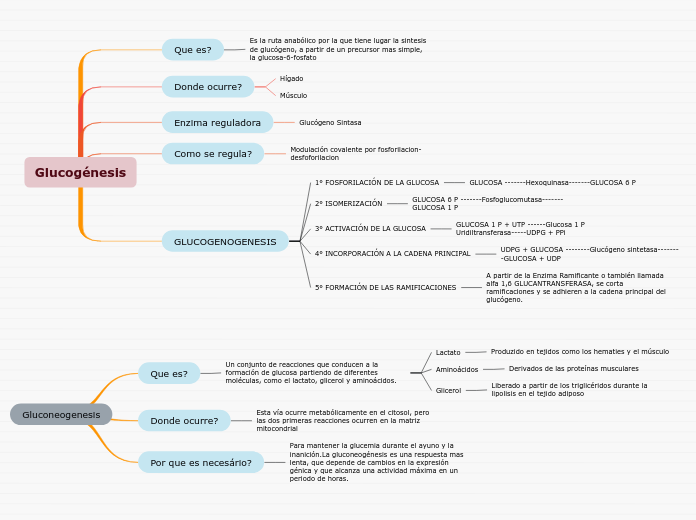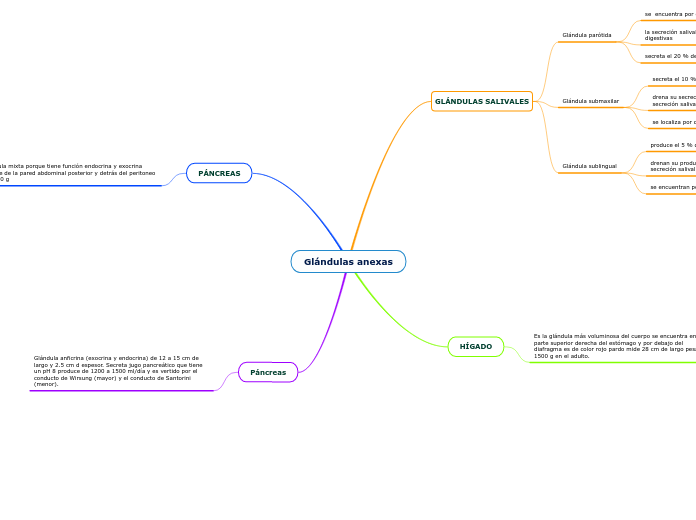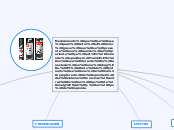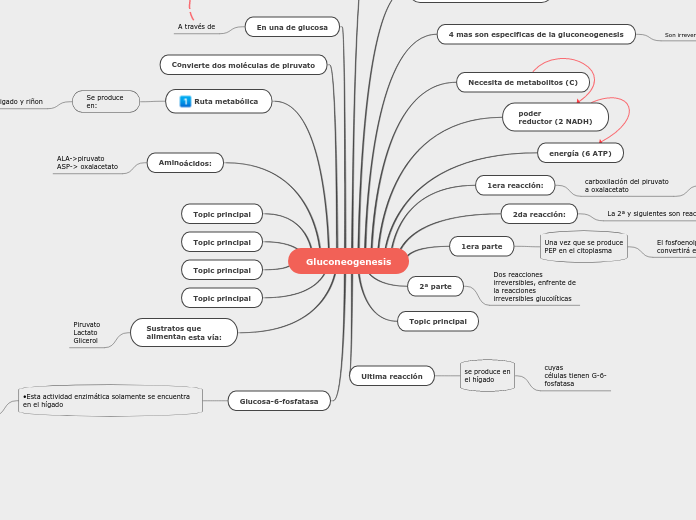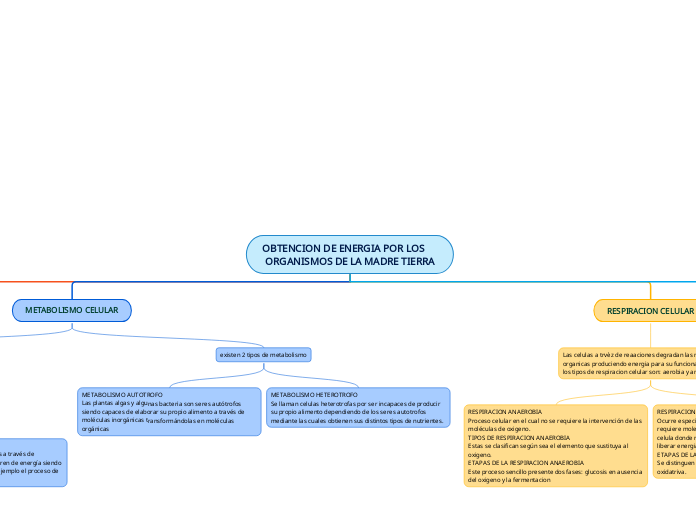Gluconeogenesis
Por que es necesário?
Para mantener la glucemia durante el ayuno y la inanición.La gluconeogénesis es una respuesta mas lenta, que depende de cambios en la expresión génica y que alcanza una actividad máxima en un periodo de horas.
Esta vía ocurre metabólicamente en el citosol, pero las dos primeras reacciones ocurren en la matriz mitocondrial
Un conjunto de reacciones que conducen a la formación de glucosa partiendo de diferentes moléculas, como el lactato, glicerol y aminoácidos.
Glicerol
Liberado a partir de los triglicéridos durante la lipolisis en el tejido adiposo
Aminoácidos
Derivados de las proteínas musculares
Lactato
Produzido en tejidos como los hematies y el músculo
Glucogénesis
To name your story, you have to think about the overall message and what you want your audience to understand from the story. Also, make it relevant and easy to remember.
GLUCOGENOGENESIS
5° FORMACIÓN DE LAS RAMIFICACIONES
A partir de la Enzima Ramificante o también llamada alfa 1,6 GLUCANTRANSFERASA, se corta ramificaciones y se adhieren a la cadena principal del glucógeno.
4° INCORPORACIÓN A LA CADENA PRINCIPAL
UDPG + GLUCOSA --------Glucógeno sintetasa--------GLUCOSA + UDP
3° ACTIVACIÓN DE LA GLUCOSA
GLUCOSA 1 P + UTP ------Glucosa 1 P Uridiltransferasa-----UDPG + PPi
2° ISOMERIZACIÓN
GLUCOSA 6 P -------Fosfoglucomutasa-------GLUCOSA 1 P
1° FOSFORILACIÓN DE LA GLUCOSA
GLUCOSA -------Hexoquinasa-------GLUCOSA 6 P
Como se regula?
The ending of a story is essential. We all know that if the ending is weak, what happened before loses its importance. So make it unpredictable, but fair. A resolved ending answers all the questions and ties up any loose threads from the plot.
Modulación covalente por fosforilacion- desfoforilacion
This is the moment when the main character surpasses the last obstacle and finally faces their greatest challenge.
The climax usually follows one of these patterns:
- realization
- resolution
- choice
Type in your answer.
Enzima reguladora
The middle of the story is where you add layers of complications that will lead to the end. Reveal more about the character's journey. Did their personality go through changes? How did they overcome the challenges? And as you build up the story’s central conflict, make it more personal to that character. Also, from the middle act, you have to lead into the final act.
Glucógeno Sintasa
Donde ocurre?
In the beginning of the story (or the exposition), you will need to introduce the setting and characters. You might also want to introduce the main conflict. This part of the story is important because it gives the reader necessary background information and maybe even a first insight into a character’s personality.
Músculo
Hígado
Que es?
Es la ruta anabólico por la que tiene lugar la sintesis de glucógeno, a partir de un precursor mas simple, la glucosa-6-fosfato
